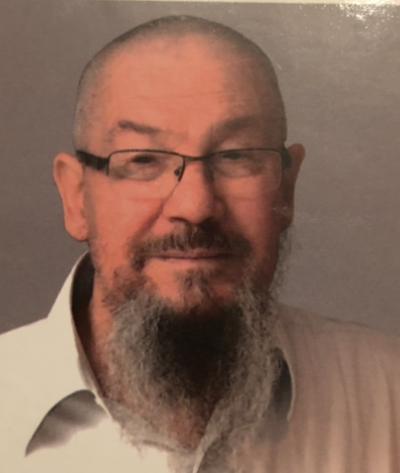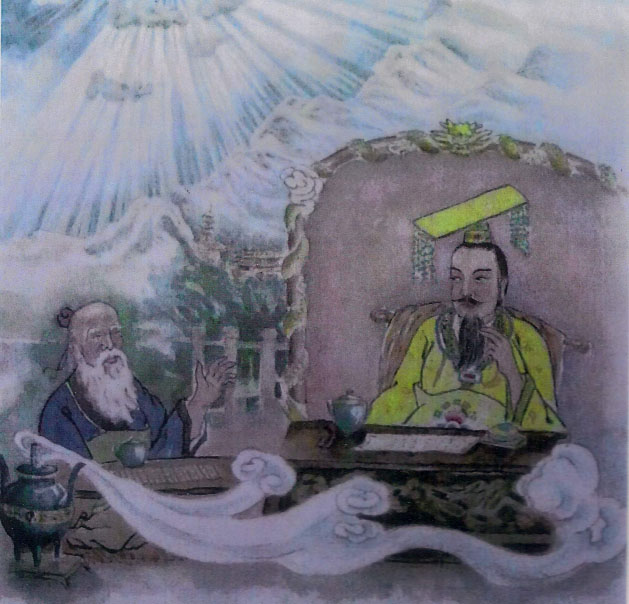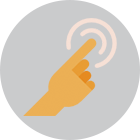
BIOGRAPHY OF THE GREAT TEACHER, PROFESSOR DOCTOR SMAJO SERHATLIĆ
This Great Teacher, has been here for 40 years, living and working in Belgrade, where he has cured or nursed tens of thousands of patients, who still come from various parts of ex-Yugoslavia and the surrounding states, because Chinese and Tibetan medicine can cure all diseases, even the hardest, however, in their initial phase.

The mythological Chinese doctor Quibo and Huangdi Waijing writing the first medical text in the world Huangdi Neijing some 4860 years ago.

Fu-Hsi
This first historic Chinese emperor lived for 300 years, thanks to the knowledge of the Great Secrets, that enabled him to live such a long life. The knowledge of the Great Secrets left behind the advanced creatures (from the universe) to his ancestors, to him and to his chosen heirs, to this day, passing exclusively from the High Priest Teachers to the specially selected students. Highly-respected Teachers are creators of the stone – elixir of wisdom, longevity, and immortality. This wise emperor revealed to the Chinese people the first eight trigrams, from which he later formed 64 hexagrams, then wrote a Chi (life-energy-divine). He also drew a symbol for Chi in a circular shape, which he called TAO, or the pre – foundation of everything in the universe. Fu-Hsi said (what he learned from his High-Winged Teachers), that pre – energy Jin-Yang (TAO) governs the macrocosm and us as a microcosm. Based on the TAO and 64 hexagrams, all the things in us, around us and also in the distant universe.

Shennong
This wise emperor lived for about 200 years. He is also a connoisseur of the Great Secrets. The nickname “Agriculture God”, he was given by his people for having revealed to them the five cereals and explained to them how to sow, cultivate and nurture them, as well as what can be prepared with them. These cereals were: corn, barley, millet , wheat and rice. He also revealed to them 250 medicinal and toxic plants, out of which he made the first herbarium. He thought his subjects about what plants and minerals are used for which diseases. He was also a Great Doctor, of the entire Chinese Medicine. He has demonstrated to tens of thousands of patients that medicinal plants and minerals work on many diseases with acupuncture needles made from fish stones and jade. This wise emperor has created over 1,000 recipes, emulsions, syrups, extracts and various creams and teas for many illnesses for which he would be envied by today’s physiotherapists and pharmacologists.
He was also the fighter of the first martial arts, called Go Ti-Vushu. He also invented the first wooden plough, then explained to his people that the land must be cultivated, plowed, irrigated, and that each field must have its own little lake for watering crops in times of drought.

Huangdi – The Yellow Emperor
This third historic Chinese emperor lived for 150 years. Like his two predecessors, he knew about the Great Secrets. He had the title of the great Doctor and Grand Master for kung fu wushu, Chinese martial arts. This wise emperor is very responsible for the development and popularisation of Traditional Chinese Medicine and Martial Arts. He ordered the Imperial Decree, that women are to engage in education and martial arts, and free national hospitals to be opened. Then followed the educational institutions for the traditional medicine, astronomy, martial arts, agriculture and philosophy. Huangdi explained to his people the great scheme of Tai Chi, or the philosophy of the forces of Yin and Yang in all situations. He is also the initiator and co-author of writing and publishing, the first and greatest book on Chinese medicine “Neijing”, which is still used as an inexhaustible source of medical knowledge, because it is also the oldest book in the world of its kind. The Yellow Emperor and his associates made the first nine acupuncture needles, four of which are still used today. In “Neijing” he explained in detail the pathology of the disease and the treatment.

ACUPRESSURE
Adhering to the Yin-Yang principle, the patient should be advised to adhere to the principles of Yin-Yang diet and lifestyle, because these are all the parameters that affect our health.


ACUPUNCTURE


MICRO MASSAGE
Massage and Kinesiotherapy in China was and remains one of the noble skills of medicine. Therefore, we should not be surprised at the fact that these techniques are different from today’s European technique, because the anatomical and physiological laws have changed very little since the time of ancient emperors from the 3rd and 4th millennia of the old era. Much later, perhaps throughout the millennium, these techniques have arrived in Egypt, Greece, and Rome. There is, however, a certain Chinese “specialty” for the
massage. In technical terms, it is located between classical massage and acupuncture. This method is called MICRO-MASSAGE THROUGH ACUPUNCTURE POINTS.
Uprkos spektakularnim rezultatima koji se dosta često postižu kineska mikromasaža je potpuno bezopasna.
Micro-massage has long been one of China’s most advanced medical techniques, about 3,000 years old. It is applied not only by micro- massage specialists, but also by acupuncturists who can not apply needles in a case of a frightened child or patient, and treat acupuncture points in this way.
Despite the spectacular results that are often achieved by Chinese micro- massage, it is completely harmless.



MOXIBUSTION

